3D home modeling revolutionizes modern interior design. This technology allows designers to visualize spaces comprehensively before actual implementation. Users generate detailed room layouts, select materials, and place furniture with precision. For instance, software like SketchUp and AutoCAD provide tools for creating accurate floor plans and 3D renderings, enhancing the planning process significantly. Studies show that 3D visualization helps in reducing errors found during the construction phase by up to 45%, ensuring projects adhere closely to their initial designs.
Clients experience heightened satisfaction levels due to 3D home modeling. They preview proposed designs in virtual environments, offering feedback that leads to adjustments prior to physical changes. This interaction minimizes misunderstandings and rework, saving time and resources. A survey indicates that 85% of clients who engaged with 3D models of their future homes felt more satisfied with the final outcome compared to those who relied on traditional 2D blueprints.
3D home modeling offers advantages over traditional 2D drafting. Designers detect potential issues early, whereas 2D plans limit this capability. 3D models provide immersive experiences, unlike 2D drawings which offer limited visual engagement. Clients make informed decisions with 3D models, while 2D plans often result in decision-making based on guesswork.
Incorporating tools like Arcadium into the design process further simplifies creating 3D house plans. Arcadium, a browser-based, 3D modeling software, targets beginners and professionals. Beginners love Arcadium for it's ease of use. Design professionals love it for it's ability to create simple (but not simplistic) presentations that can be shared with clients via a link online. It stands out by enabling users to create 3D house plans in minutes, emphasizing simplicity and ease of use. This approach aligns with the growing demand for efficient, user-friendly design solutions in modern interior design.
Contents:
How has 3D home modeling revolutionized the approach toward interior design projects? By enabling designers to construct detailed digital representations of spaces. This advancement allows for an exhaustive visualization of rooms, furniture, and décor items, facilitating a meticulous planning process. Clients benefit by experiencing their future living spaces virtually, ensuring their needs and preferences are met before physical changes are made.
What challenges does traditional interior design face that 3D home modeling overcomes? The inability to visualize the end result accurately. Traditional methods rely on flat blueprints and physical samples, which can lead to misinterpretation of scale and color. Conversely, 3D modeling provides a comprehensive view, including light simulation and texture representation, which eliminates guesswork and promotes a clear understanding between designers and clients.
Why is client satisfaction significantly higher with 3D home modeling? Because it offers customization at an unprecedented level. Every element, from wall colors to the texture of fabrics, can be altered with a click, making it simple to explore various options and combinations. This capability ensures that the final design truly reflects the client's lifestyle and aesthetic preferences, increasing the likelihood of a successful project outcome.
In evaluating the efficiency of design processes, 3D home modeling outpaces traditional methods by a substantial margin. Designers can alter elements within minutes, where previously, changes required hours or even days of manual adjustment. This speed not only accelerates project timelines but also reduces the cost of revisions. The precision of 3D models minimizes the risk of errors during the construction phase, ensuring that the execution matches the vision with greater fidelity.
3D Modeling: A New Frontier in Home Renovation
How has 3D modeling transformed the approach to home renovation? By offering a precise visualization of design changes before implementation. Designers can alter room layouts, modify color schemes, and adjust lighting effects efficiently. Clients appreciate the ability to see potential outcomes, reducing uncertainty and enhancing decision-making confidence.
What advantages do 3D models offer over traditional 2D blueprints in understanding spatial relationships? They enable a more intuitive grasp of how different elements within a space interact. Walls, furniture, and decorations are viewed in relation to one another, allowing for a comprehensive assessment of aesthetic and functional aspects. This spatial awareness aids in optimizing the usage of every square inch, ensuring that no area goes underutilized.
Are there any benefits in terms of collaboration and communication? Absolutely, as 3D models serve as a common language between designers, contractors, and clients. Each stakeholder can provide input and feedback instantly, streamlining the design process. This collaborative environment fosters a shared vision, minimizing misunderstandings and errors during the construction phase.
In terms of innovation and efficiency, 3D home modeling stands significantly ahead of traditional methods. Projects are completed with greater accuracy and speed, leading to cost savings for both designers and homeowners. The flexibility in experimenting with designs encourages creative solutions, which ultimately enhances the aesthetic and functional qualities of living spaces. This advancement marks a pivotal shift in home renovation, where possibilities become limitless.
Real-Time Visualization and Client Engagement
How has real-time visualization transformed the client's involvement in the design process? Significantly, by allowing immediate observations and adjustments. Designers showcase various layouts, colors, and materials, which clients review and modify on the spot. This instant feedback loop accelerates decision-making, enhancing satisfaction and trust between the designer and client.
Why does client engagement matter in modern interior design? Fundamentally, it ensures the final space reflects the client's vision and needs accurately. Through 3D modeling, clients explore and interact with their future spaces, making informed choices about furniture placement, lighting, and textures. This involvement deepens their connection to the design, increasing the likelihood of a fulfilling outcome.
What are the benefits of using 3D home modeling for both clients and designers? For clients, it demystifies complex design concepts, turning abstract ideas into tangible visuals they can easily understand and evaluate. For designers, it serves as a powerful tool to demonstrate technical competencies and creative vision, thereby elevating their portfolio and attracting more business. The technology bridges the communication gap, fostering a collaborative environment where ideas flow freely and efficiently.
3D home modeling is a superior method for client engagement over traditional 2D blueprints. It allows clients to take an active parts the creative process, offering them a virtual walk-through of their future homes, unlike flat drawings that require imagination to interpret spatial arrangements. This method bolsters the designer-client relationship, ensuring the final product more closely aligns with the client's expectations and desires. Moreover, the ability to experiment with and visualize different design options in real-time significantly reduces errors and rework, saving both time and resources.
Cost Efficiency and Error Reduction in Design Projects
How does 3D home modeling enhance cost efficiency in design projects? By allowing designers and clients to visualize spaces in detail before construction begins, this technology significantly reduces the need for expensive physical models. Digital simulations replace tangible prototypes, slashing material and labor expenses. Moreover, the precision of 3D models curtails unforeseen costs, often stemming from design inaccuracies.
Can 3D home modeling diminish the frequency of errors during the design process? Indeed, it facilitates the identification and correction of mistakes at an early stage, ensuring designs are error-free before construction commences. Spatial conflicts within a room, incorrect dimensions, and incompatible materials emerge clearly in 3D visualizations. This clarity prevents costly and time-consuming rectifications later.
Why are examples crucial in understanding the benefits of 3D modeling for error reduction and cost efficiency? Examples illustrate the tangible outcomes of implementing 3D technology in real-world scenarios. For instance, detecting a miscalculation in room size or a clash between structural elements beforehand can avert demolition and rebuilding, saving substantial resources. Examples embody the practical application of abstract concepts, making the advantages of 3D modeling relatable and clear.
In terms of cost efficiency and error reduction, 3D home modeling stands as a more favorable approach than traditional methods. With 3D technology, designers edit digital models swiftly and at minimal expense, whereas alterations in conventional blueprints necessitate extensive manual revisions, consuming more paper, ink, and human labor. Errors spotted in a 3D model incur virtually no additional costs to rectify, unlike mistakes found during or after construction, which demand substantial financial and material resources to resolve.
Enhancing Customization and Creativity
How does 3D home modeling amplify customization options? It allow for more design options and experimentation, enabling users to tailor spaces to their exact preferences. Designers employ software to craft detailed environments, from the textures on walls to the arrangement of furniture. These tools transform client visions into tangible previews, offering a personalized blueprint that aligns perfectly with their desires.
What role does creativity play in 3D home modeling? It serves as the bedrock, fostering an environment where innovation thrives. Architects and designers experiment with a variety of elements, including colors, materials, and lighting, to achieve a unique aesthetic. This process encourages a departure from conventional design norms, inviting a blend of contemporary and traditional styles that reflect the homeowner's personality and lifestyle.
Can 3D modeling expand the horizons of interior design beyond traditional methods? Certainly, by providing a three-dimensional canvas, it allows for a more immersive exploration of space. Designers manipulate dimensions and perspectives to optimize room layouts, ensuring functionality does not compromise style. This method not only streamlines the decision-making process but also minimizes errors, guaranteeing a result that is both aesthetically pleasing and practical.
In terms of enhancing customization and creativity, traditional sketching pales in significance to 3D modeling. Where the former offers limited views and requires imagination to fill the gaps, the latter delivers comprehensive visualizations, showcasing every angle and allowing for immediate adjustments. This difference not only accelerates the design phase but also ensures the final outcome more accurately reflects the client's vision, demonstrating a clear advantage in fostering personalization and innovative design solutions.
Sustainable Design and Material Selection
How has 3D modeling transformed sustainable design practices? Significantly, by enabling more informed decisions early in the design process. Designers utilize software to simulate various sustainable materials and construction methods, analyzing their environmental impact. This process leads to the selection of low-emission materials and energy-efficient building techniques, reducing the carbon footprint of projects.
What role does material selection play in eco-friendly interior design? A pivotal one, as the choice of materials directly influences both the sustainability and the aesthetic appeal of a space. Designers opt for recycled, renewable, or sustainably sourced options such as bamboo for flooring, wool for insulation, and reclaimed wood for furniture. Each selection aims at minimizing adverse environmental effects while enhancing indoor air quality and energy efficiency.
How do designers ensure the longevity and durability of selected materials? Through meticulous analysis and simulation. 3D modeling software allows for the testing of materials against various stress factors, including wear, tear, and environmental conditions. By predicting material behavior over time, designers choose options that promise both sustainability and durability, ensuring a longer lifespan for each product and reducing the need for frequent replacements.
In the arena of interior design, 3D home modeling stands as a more effective tool for sustainable design and material selection than traditional methods. Through the precise analysis and visualization capabilities it offers, it leads to more environmentally friendly and resource-efficient choices. These practices, in turn, contribute to healthier living environments and reduced waste, underscoring a profound shift towards sustainability in modern interior design.
The Role of Virtual Reality in Interior Design
What advantages does virtual reality bring to interior design? Virtual reality revolutionizes the way designers conceptualize and communicate their ideas. By enabling clients to virtually walk through their future spaces, this technology bridges the gap between imagination and reality. Designers can manipulate elements–furniture, wall colors, lighting fixtures–with ease, allowing for instant feedback and adjustments based on the client's preferences.
How does virtual reality affect client decision-making? This immersive technology empowers clients, making them active participants in the design process. They are no longer passive observers but can explore various design scenarios, textures like velvet or silk, and layouts before any physical work begins. This significantly reduces uncertainty and increases satisfaction, as clients can visualize the end result more clearly and make informed decisions about elements such as floorings, textiles, and color schemes.
Why is virtual reality considered a game-changer in interior design presentations? Traditional presentations rely on flat images or physical models that cannot fully convey the essence of a design. Virtual reality, on the other hand, offers a dynamic and interactive experience. Viewers can perceive dimensions and spatial relationships, such as the contrast between spacious living areas and cozy bedrooms, more accurately. This depth of understanding improves communication between designers and clients, facilitating a more efficient and effective design process.
In the sphere of interior design, virtual reality stands as a superior tool for visualization and client engagement than traditional methods. It enables users to experience designs in high definition, providing a more accurate appreciation of textures, colors, and spatial dynamics. Clients immersed in a virtual environment gain a comprehensive understanding of how different elements–ranging from large furniture pieces to small decorative items–work together to create a cohesive look. This immersive approach not only enhances the decision-making process but also ensures that the final design aligns perfectly with the client's expectations, setting a new standard for precision and satisfaction in interior design projects.
Impact on Client Decision-Making and Satisfaction
How does 3D home modeling influence client decision-making? Significantly, by providing precise visualizations of proposed designs. Clients view detailed replicas rather than imagining from 2D sketches. This clarity leads to informed choices, enhancing confidence in decisions.
What role does 3D modeling play in increasing customer satisfaction? By allowing modifications before implementation, it ensures alignment with client desires. Customers experience less regret and more fulfillment, seeing their input reflected in the final design. Satisfaction rates soar as a result of this tailored approach.
Does 3D modeling affect the frequency of design revisions? Absolutely, by reducing the number of changes required. Early visualizations help clients and designers identify and agree on modifications sooner. This efficiency cuts down on time and resources spent on reiterations.
3D home modeling elevates client decision-making and satisfaction more effectively than traditional methods. Clients enjoy a clearer understanding of potential outcomes, leading to fewer revisions and heightened satisfaction. This technology fosters a direct, impactful connection between visualization and final product, unheard of in past decades.


 All training, tips and articles
All training, tips and articles
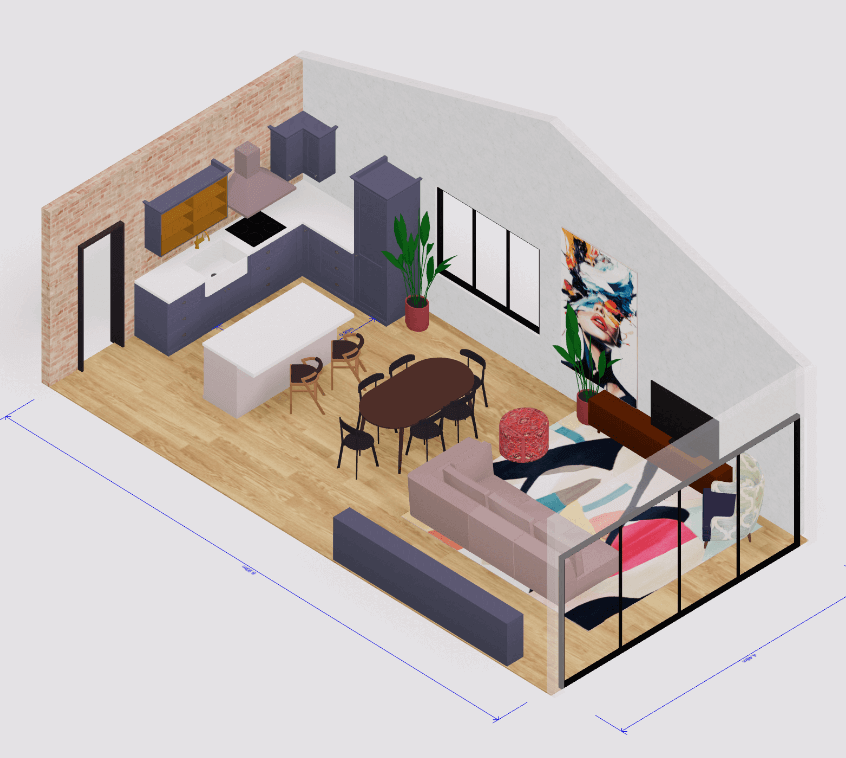 3D house design tool
3D house design tool
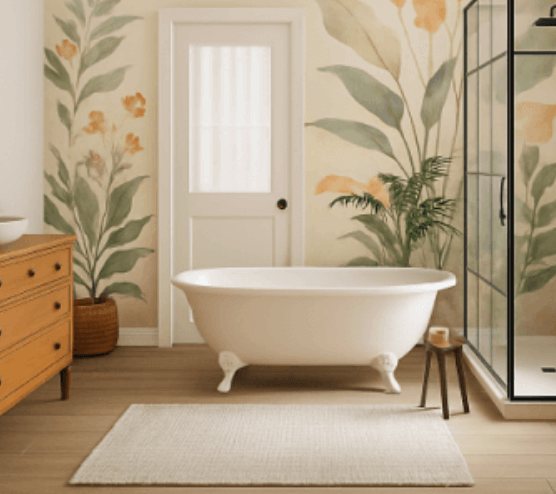
 Color palette generator
Color palette generator
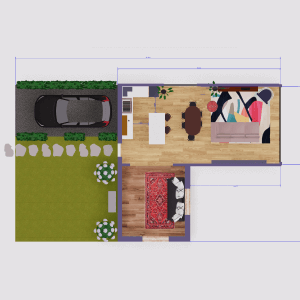 Floor plan creator
Floor plan creator
 Interior design app
Interior design app
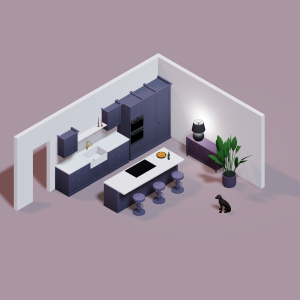 Kitchen design tool
Kitchen design tool
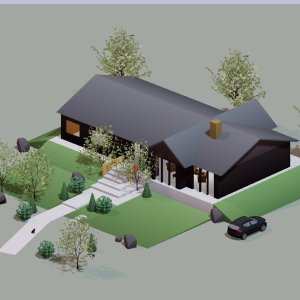 House design software
House design software
 Room designer
Room designer
 Landscape design software
Landscape design software
 Bedroom design
Bedroom design
 Office floor plan creator
Office floor plan creator
.png)



